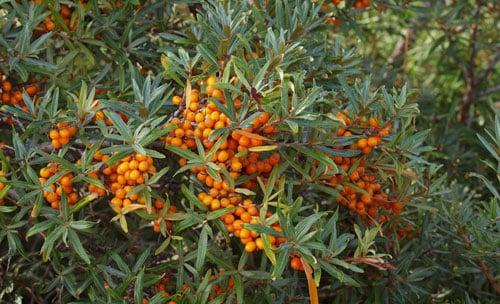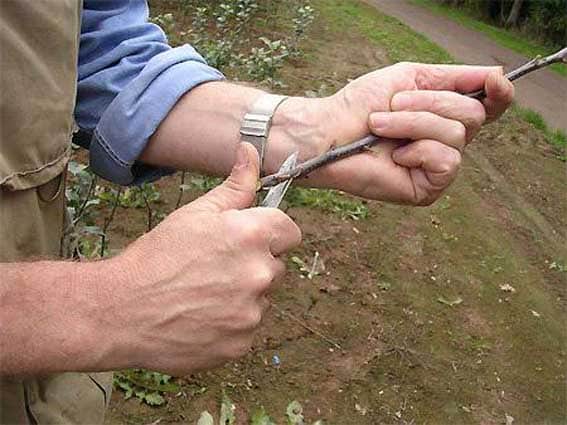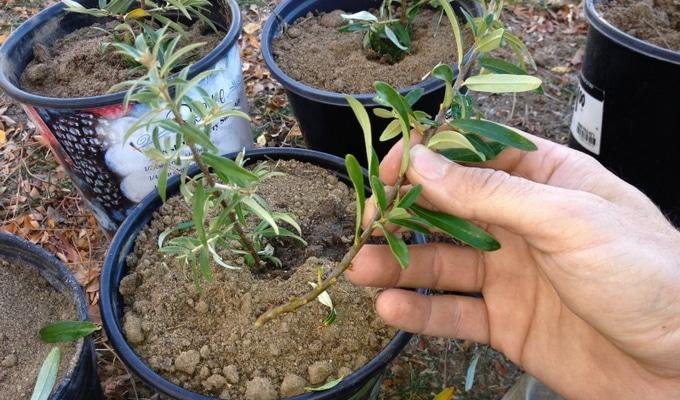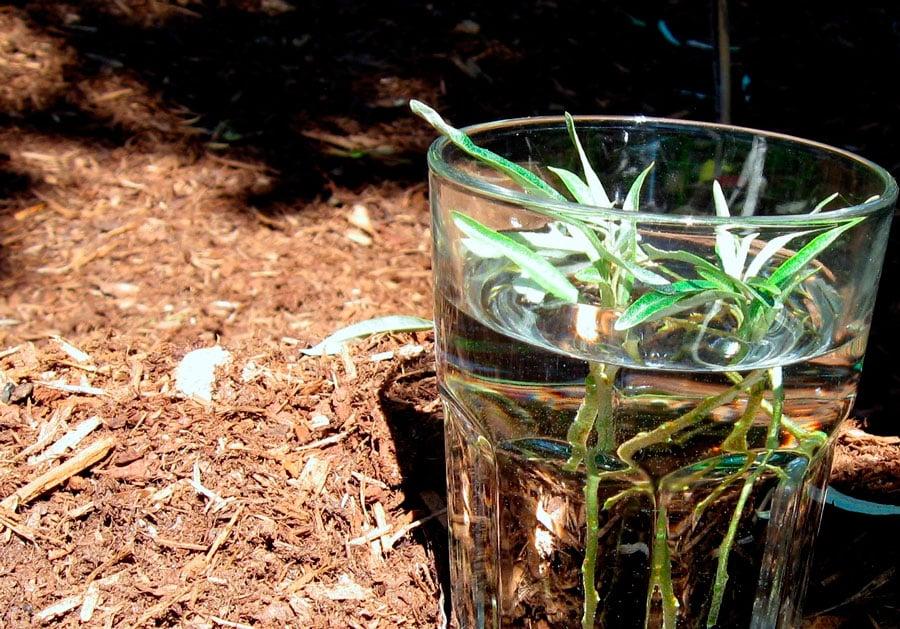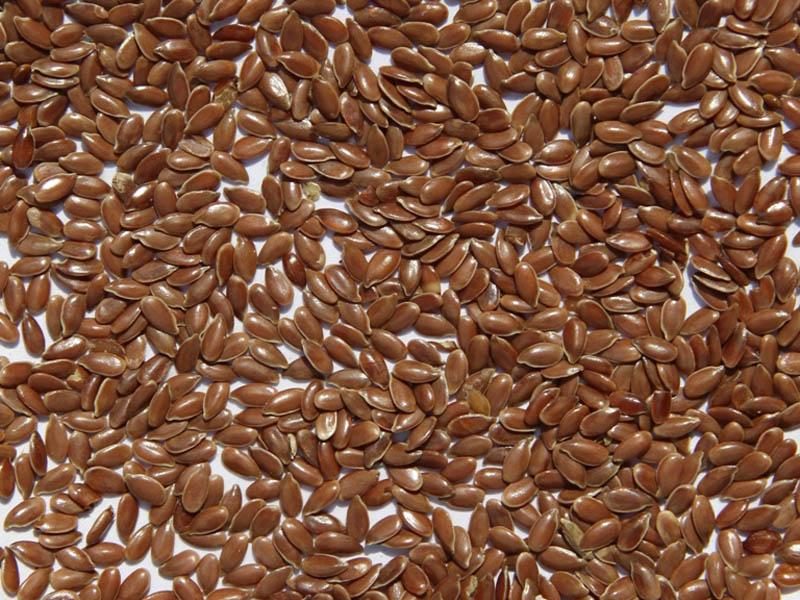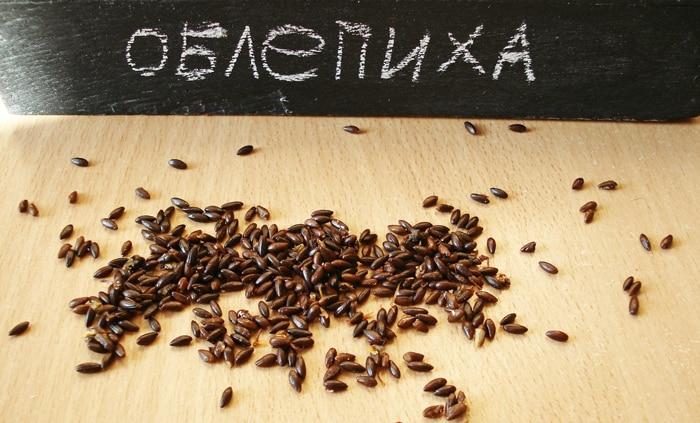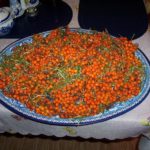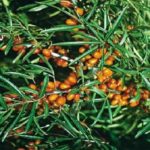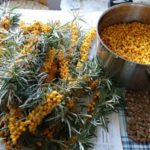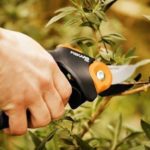Every gardener who grows shrubs is interested in propagating sea buckthorn. Seedlings of different varieties are available for sale. But sometimes it is necessary to repeat a plant of a rare or folk species. In this case, you will have to do the reproduction yourself.
- Timing for procurement of planting material
- Methods and technology for propagating sea buckthorn
- Overgrowth
- Lignified cuttings
- Green cuttings
- Bush divisions
- By layering
- Vaccination
- Seeds
- We prepare the seed material
- How to plant seeds
- Germinating sea buckthorn from seeds at home
- Timing and rules for transplanting sea buckthorn seedlings into open ground
Several methods of reproduction are known. But not all of them retain the parental qualities of the plant.In this case, the gardener will receive sea buckthorn with the most unexpected characteristics.
Timing for procurement of planting material
The timing of preparation of planting material depends on the chosen method of propagation. In the fall, seeds and fully lignified cuttings are prepared for spring planting. In the summer, green twigs are prepared for June cuttings.
Methods and technology for propagating sea buckthorn
To grow sea buckthorn that completely replicates the parental characteristics, you should study all possible methods of propagation.
Overgrowth
Wild sea buckthorn reproduces well by root shoots. And all the old varieties produce an abundance of shoots that litter the area. They should be carefully separated from the mother plant and transplanted to a new location. Modern varieties with improved characteristics are often grafted onto wild sea buckthorn. In this case, this method of propagation is not suitable: the gardener will receive root offspring from the wild one.
Difficulties of the method:
- when cutting off a shoot, the root of the mother plant is injured;
- When a young bush is removed, its root system is damaged.
Advantages of the method:
- it is known in advance whether the plant is male or female;
- the result is a healthy sea buckthorn for 1-2 years;
- The bush takes root easily and soon begins to bear fruit.
It is important to remember: you should choose a plant at a distance of 1.5-2 m from the central trunk of the mother sea buckthorn.
Lignified cuttings
Lignified cuttings begin to root as soon as the soil warms up slightly. For the success of the operation, it is important to properly preserve the planting material. How to act correctly:
- Cuttings are cut in late autumn (late October - early November).
- The temperature during the collection of cuttings should be positive. This is required for the safety of the mother plant.
- The length of the cutting is 15-20 cm, and the thickness is 0.5 cm.
- The cuttings are wrapped in damp linen cloth and placed in the refrigerator.
- When snow falls, the fabric with the cuttings is buried and stored until spring.
- In spring, cuttings are placed in a previously prepared area. They are buried at an angle of 45 degrees, leaving 3-4 buds above the ground.
- The area with the schoolchild is regularly moistened.
The following year, the rooted sea buckthorns are planted in a permanent place.
Green cuttings
With this method of propagation, new green cuttings up to 0.5 cm thick are taken. They are cut so that there are 5-6 buds. The upper cut is made straight and filled with melted wax. The bottom cut is made at an angle of 45 degrees. The lower end is dipped in a root formation stimulator. Cuttings are rooted in water. In this case, the liquid should only lightly cover the cut.
To prevent rapid evaporation, it is recommended to make a greenhouse over the container. To do this, holes are pierced in a plastic bag for gas exchange, and the bag itself is put on the container and secured with an elastic band. The container is placed in a place where sunlight is diffused. After 2-3 weeks, roots form, and sea buckthorn is planted for growing in a school.
Bush divisions
This method is used when replacing an old plant with a new one. It is traumatic, and often new plants do not take root. In addition, the delenka completely inherits the diseases of the maternal sea buckthorn.
How to proceed:
- Carefully dig up the mother plant. Free the root system from excess soil.
- Chop the root with an axe. Trim damaged and diseased roots.
- Reduce the above-ground part of the plant accordingly.
- Plant the delenka in a pre-prepared planting hole and water well.
This propagation method is recommended for use in the fall.
By layering
The method differs from propagation by root shoots in that it is possible to obtain a root shoot with the characteristics of the mother plant.
Sequencing:
- in the spring, a healthy shoot is selected and pinned to the ground;
- sprinkle with earth on top;
- the top is cut off (so that all the forces of the branch go to the formation of roots);
- further care consists of timely moistening the soil at the pinning site.
The rooted plant is planted in a permanent place next spring. Disadvantage of the method: some varieties cannot overwinter on their own roots.
Vaccination
This method of propagation is preferred by gardeners with small plots. For grafting, varietal cuttings should be prepared in advance. For grafting, use the butt or split method. Sea buckthorn should be propagated in this way in early spring (before sap flow begins). But varietal cuttings do not always take root, so you should stock up on planting material in excess.
Seeds
The method is not the most effective, since daughter sea buckthorns do not inherit the characteristics of the mother plant. But at the same time it allows you to obtain a huge amount of planting material. Young bushes are recommended for landscaping or strengthening cliffs, landslides, and river banks.
We prepare the seed material
Seeds are taken only from fully ripened berries. The fruits should be mashed, washed in plenty of cold water, and freed from pulp and films. Then place on a napkin and dry. The shelf life of seed material is up to 3 years.
How to plant seeds
Seeds require stratification for germination. The dried seeds are placed in a cloth bag and buried in the snow.The burial site is marked so that the seeds can be quickly dug up in the spring. The material is kept in this state until the snow melts. As soon as the soil warms up to 5-7 degrees, the hatched seeds are placed in a pre-prepared container.
After germination, the seedlings are thinned out twice: the first time in the phase of 2 true leaves, the second time in the phase of 8. Sea buckthorn is ready for planting in a permanent place 2 years after sowing.
Germinating sea buckthorn from seeds at home
It can be done at home. To do this, the seeds are soaked for 2-3 hours, and then dried on a napkin and wrapped in cloth. The tissue with the seeds is placed in the fruit box of the refrigerator and kept there for a month.
The fabric is periodically checked and, if necessary, moistened. This germination method should be carried out in the first ten days of March in order to sow the seeds in the school in early April.
But you can carry out stratification in January, and in February sow the hatched seeds in a greenhouse. It is recommended to place the greenhouse in a warm place, and after germination - on the windowsill. For the normal development of seedlings, it is recommended to illuminate them with an agricultural lamp.
Timing and rules for transplanting sea buckthorn seedlings into open ground
It is recommended to transplant young sea buckthorns from an indoor greenhouse into open ground only after the soil has warmed to 15 degrees. And it is necessary to take into account the absence of return frosts: they will destroy the sea buckthorn.
Usually the optimal time for placing seedlings in a schoolhouse in open ground is: late April - early May. It is recommended to first expose the greenhouse to the open air for 2 weeks to harden the sea buckthorn.

